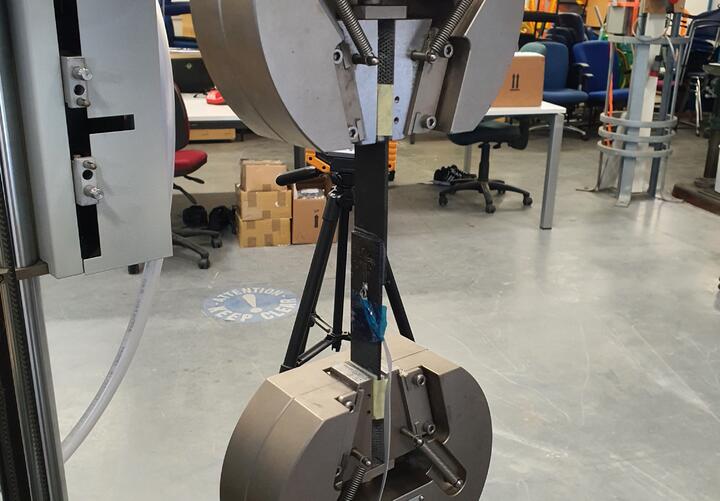Building manufacturing confidence in adhesive bonded joints for aerospace
Challenge
To monitor aerospace-grade adhesively bonded joints during both manufacture and in-service to provide the confidence for manufacturers and end-users to utilise bonded joints as an option to mechanical fasteners, as well as providing further information about in-service performance.
Background
The aim of this project, funded by the High Value Manufacturing (HVM) Catapult, was to identify and test structural health monitoring (SHM) equipment for bonded joints used in aerospace, which could also be used for manufacturing health monitoring (MHM). Three methods were selected and tested for their ability to monitor the quality of the adhesive bond during the manufacturing process, and their capacity to predict failure during mechanical testing.
Innovation
Three novel SHM methods were embedded into adhesive joints during the manufacturing process so that the bonding and curing process could be monitored, also known as MHM. Sensors were then used to monitor the strain during mechanical loading, with the aim of trying to predict the failure of the components.
The first system method was fibre Bragg gratings - fibre optics that can measure strain - which were embedded in the adhesive within the joints. The second process was electrical self-sensing, which monitored the electrical conductivity of conductive carbon nanotube modified resin. The third was an ultrasonic monitoring system provided by Inductosense, which monitored the bond line thickness.
Each system was evaluated on the ability to verify the bonding and the cure of the components, as well as their ability to give information on the mechanical loading and any prediction of failure of the parts.
Results
All the sensors managed to give an indication of the manufacturing health and structural health of the bonded joints, with some being more successful than others.
Fibre Bragg gratings are commonly used in SHM, however not as much for MHM. They were able to give an indication of the degree of cure, but needed careful pre-calibration to provide accurate results. Electrical self-sensing has the potential as a universal solution due to the ease of setup. However, both manufacturing and structural monitoring results were inconsistent.
The manufacturing results gave a wide range of values and the structural testing only on occasion gave an indication of failure. Ultrasonic monitoring of the bond was the most successful, the Inductosense patches were easy to install and monitor. The cure shrinkage of the adhesive gave a good indicator of the degree of cure and was able to give an early indicator of failure during the mechanical testing stage.
Impact
The research has shown there were multiple potential benefits for the use of adhesives in aerospace manufacturing.
It has shown there are off-the-shelf systems, which are usually used for SHM, that can be used earlier in the manufacturing cycle to collect important data on process steps, as there is currently very little data available. For systems like fibre Braggs, which can be used for composite SHM already, they can be used to verify the curing of the part, and during the lifespan of the component.
For further information, please contact Matthew Collinson, research engineer:
T: 0114 212 6668 E: m.collinson@amrc.co.uk



